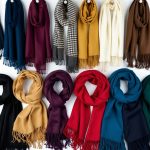
Impact of Social Media on Fashion Brands
The rise of social media has revolutionized the fashion industry. Platforms like Instagram, TikTok, and Pinterest have become critical channels for brand visibility. Designers use these platforms to showcase their collections, engage with followers, and build their brand identity.
Social media allows for direct consumer interaction. Fashion enthusiasts can comment on posts, share content, and even purchase items through integrated shopping features. This direct feedback loop helps brands stay attuned to consumer preferences.
Brands often collaborate with influencers to reach wider audiences. Influencers showcase fashion pieces to thousands, sometimes millions, of followers. This can significantly boost brand awareness and sales. Such collaborations can also lend credibility and trendsetting power to fashion brands.
Fashion houses also utilize social media for real-time marketing. Live streams of runway shows, behind-the-scenes glimpses, and instant updates ensure consumers are always in the loop. This immediacy helps maintain excitement and engagement around new releases.
Crossover Collaborations with Other Industries
Fashion designers in 2024 are constantly exploring synergies with various industries, resulting in unprecedented innovations. Many are teaming up with tech companies to integrate cutting-edge technology into their designs, creating clothing that not only looks good but also offers practical functionality.
For instance, a designer might collaborate with a tech company to incorporate smart fabrics into their collection. These fabrics can monitor biometric data, providing wearers with real-time health information.
Some designers are also working with the automotive industry. Luxury car manufacturers often work with these visionaries to develop exclusive interior designs, merging high fashion with high-performance vehicle aesthetics.
The impact of such collaborations extends to the sustainable fashion movement as well. Partnerships with environmental organizations or companies focused on sustainable materials have resulted in eco-friendly collections that appeal to the environmentally conscious consumer.
The entertainment industry is yet another field where these crossovers are flourishing. Designers often team up with movie studios or video game developers to create costumes that appear both on screen and on the runway.
These collaborations are not just limited to products but extend to marketing strategies too. Joint marketing campaigns create a buzz that benefits both industries, drawing attention from diverse audiences.
In 2024, these crossover collaborations are ushering in an era where fashion is no longer confined to the runway. Instead, it becomes a part of everyday life through practical, stylish partnerships.
The Role of Fashion Weeks in Promoting New Talent
Fashion weeks serve as crucial platforms for emerging designers. They provide visibility that can be hard to achieve through other means. Participation allows designers to showcase their work to influential industry figures.
Runway shows attract buyers, journalists, and influencers. This exposure can lead to media coverage and social media buzz. As a result, new designers may secure retail contracts or collaborations.
These events also facilitate networking opportunities. Designers can connect with potential mentors, partners, and investors. Networking can play a significant role in a designer’s career growth.
In addition, fashion weeks often conduct competitions and awards. Winning or even participating can enhance a designer’s credibility. Recognition from such events can be a significant boost to their reputation.
Fashion weeks also push designers to innovate. The need to stand out in a highly competitive environment fosters creativity. This can lead to more unique and compelling collections.
Through these various channels, fashion weeks significantly contribute to the promotion and success of new talent in the fashion industry.



